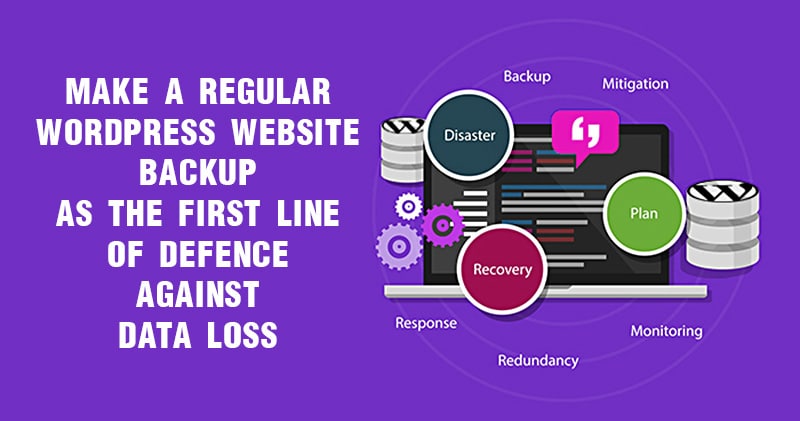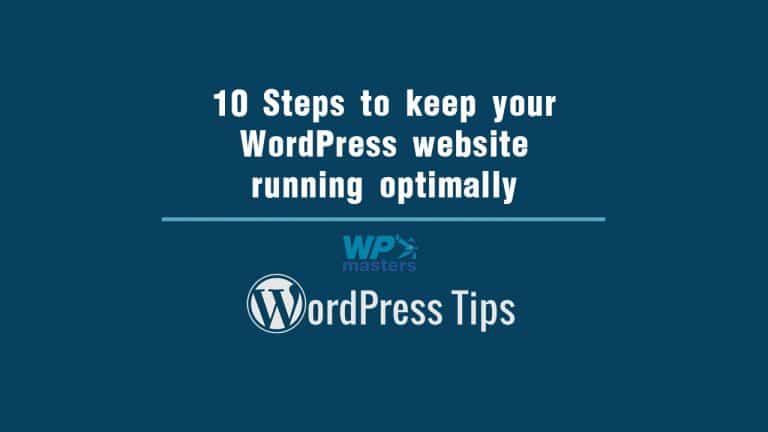After a few weeks of intense content creating and website development your website is finally live. So the hard part is done, but this does not mean that your job is done.
Instead, now you need to focus on making sure your website is running optimally. Steps to keep your website in the tip-top shape are:
- Backup your website regularly.
- Test your website with popular internet browsers.
- Make a website security check at least once a week.
- Update WordPress, theme and plugins.
- Update footer information.
- Fill out and test your website forms.
- Review website analytics.
- Remove unused plugins and themes.
- Review and optimize your WordPress database.
- Review active WordPress plugins and themes.
Backup your website regularly
The first line of defense against data loss is making a proper backup. The best-case backup scenario would be to make a daily backup off-site, both for your WordPress website files and the database.
Using a backup plugin you can schedule backups in the quiet hours when the website receives low traffic, to your own online space such as Google Drive.

Test your website with popular internet browsers
Popular internet browsers receive regular updates and these updates can bring a number of changes that may induce issue with your website layout. Ensuring your website works well with them you will secure an enjoyable experience for your website visitors.
Keep in mind that many will browse using a mobile platform, so if possible test with both PC, Mac, Android, and iPhone browsers.
Make a website security check at least once a week
While this may seem something that needs to be done by your WordPress theme developer, you should not leave it to chance.
A plugin or an online service can help you make a security check schedule for your website. Weekly is optimal while monthly security check is the bare minimum you should consider.
Update WordPress, theme and plugins
As with any software, WordPress too receives regular updates from the developers. These updates will provide beneficial improvements to your website security and help you protect it.
Before applying the update, read through the patch notes which will inform you of the significant changes.
Update footer information
It happens once in a while, that I come across a website which has a somewhat outdated footer information along with a few-years-old copyright notification.
It may not seem significant but it can lead your potential customers into thinking that your website is not still in the business, or at least it can make you look silly as a website owner.
Fill out and test your website forms
Your website is sure to have at least a few forms, from the contact form to the poll or support form. With changes and updates to WordPress, plugins, and themes, these forms may lose their functionality or not behave as intended.
This is why it is important to test them regularly, else your customers may lose their inquiry, purchase or contact.

Review website analytics
Website analytics is the primary source for your website growth information.
Knowing with which pages your visitors spend time most, where they come from and other demographic data you will be able to optimize conversions and apply tweaks to your website content.
Remove unused plugins and themes
No website hosting resources are limitless. WordPress does offer a large portfolio of free and paid plugins and you may be enticed to experiment with a lot of them. However, if you do not use a plugin or a theme, then remove it.
There is no point with having a plugin taking storage and resources unless it is an integral part of your website. Being conservative will help your website run smooth.
Review and optimize your WordPress database
Storage space consumed by the WordPress database may become significant, with post revisions and media content piling-up. Every few months take a bit of time, go through your database and delete excess content.
This optimization will ensure your website keeps peek performance.
Review active WordPress plugins and themes
On a final note, your installed and active plugins need to be evaluated. How well they perform? Are they still actively developed? Are there better paid or free plugins that could help you improve your website?
Is that WordPress theme still developed or updated? These questions will help you determine if your active plugins and theme need replacement.
Hope these tips have given you a fair insight into WordPress website management. Should you choose and follow them, I am sure your website will be performing at its best.

